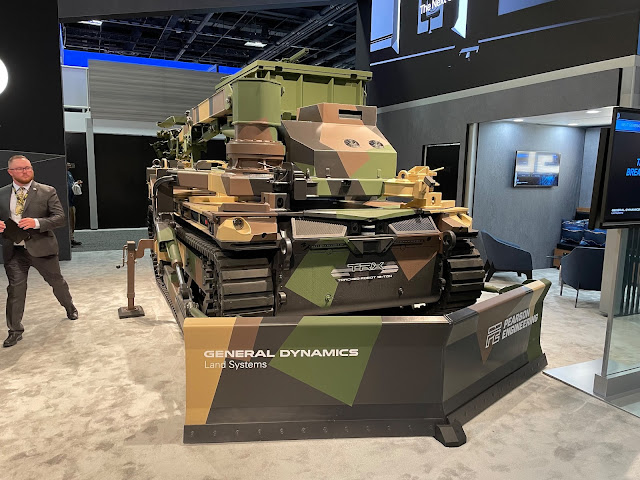
|
| Robotic Warfighter TRX General Dynamics Land System |
To help human operators make sense of large amounts of raw sensor data, AI-enabled computers can use it as a sounding board to make comparisons, solve problems, and analyze many different variables in relation to one another. Modern algorithms can search through an infinite amount of data and find important objects with tactical importance in a matter of milliseconds, freeing human operators from the mental load and time constraints that come with such a task.
In an interview with The National Interest, Keith Barclay, GDLS's director for U.S. strategy and growth, said that the company is applying "these different technologies, either to what the Army calls enduring fleets that are going to be around for a while, like the Abrams in the Stryker, or to emerging requirements" like robotics and air defense, which the military is currently focusing on and is about to begin making formal programs for. Getting feedback from the Army on which technologies they find most promising, useful, relevant, etc. and which they find less so will help set priorities for future research and development and decide which other technologies will be shown at the event.
In many cases, GDLS tries to predict and meet Army needs by setting up common protocols, IP standards, and interfaces. This makes it possible for the Army to keep getting more modern. As an example, the GDLS method of active protection systems (APS) is based on making an open system that can work as a part of a vehicle instead of a "bolt-on" system. Its APS, for example, can use cutting-edge non-kinetic defenses like electronic warfare or high-powered microwaves. Its effectors and technology can also change depending on what the situation calls for.
Tim Reese, who is in charge of business development for GDLS in the United States, says that APS technology can use both electromagnetic waves (EMW) and a high-powered microwave.
Unlike hard-to-kill systems, this one can't be physically destroyed. Since it is powered by electricity, your only restriction will be the amount of gas in your tank. Another thing that sets it apart is that it can take on and win against armies of drones. It can engage multiple targets at once, but that's not all it's good for. Reese remarked, "But it can also steer the beam of microwaves to a larger area, and any drone that is inside that beam will be affected in the same way." Such jammers and interceptors could stop an entire armada of kamikaze drones in their tracks.
Sharing parts between platforms can boost creativity, make repairs and maintenance easier, improve the efficiency of the supply chain, and make sure that performance is always the same. So, when designing for growth and stability in the future, the GDLS team carefully thought about a wide range of platforms and technologies.
The AbramsX, the StrykerX, and the TRX are three of the four vehicles that share characteristics. Take note of the similarities. All of them, Barclay added, "are powered by hybrid electric engines," making them one-of-a-kind.

.jpeg)
